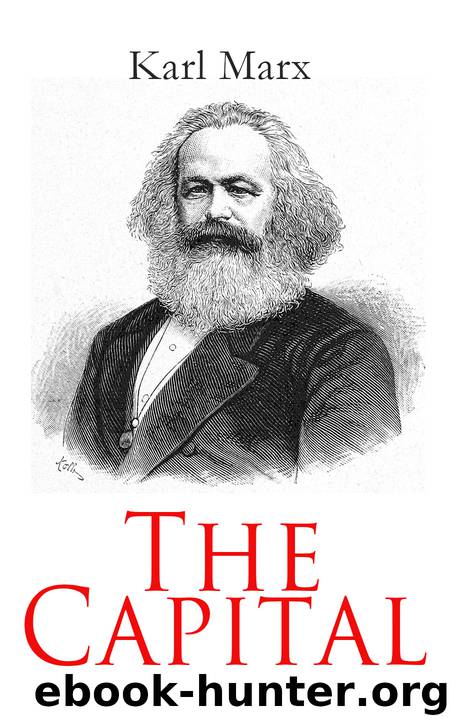The Capital by Karl Marx

Author:Karl Marx [Marx, Karl]
Language: eng
Format: epub
ISBN: 9788026892861
Publisher: e-artnow
Published: 2018-04-30T16:00:00+00:00
(Quantity of S.-V. produced in one Period of T.-O.)/(Var. Cap employed in one Period of T.-O.)
must be multiplied with the number of periods of turn-over, or of the periods of reproduction of the advanced variable capital, that number of periods in which it renews its cycle.
We have seen already in volume I, chapter IV (The Transformation of Money into Capital), and furthermore in volume I, chapter XXIII (Simple Reproduction), that the capital value is not all spent, but advanced, as this value, having passed through the various phases of its cycle, returns to its point of departure, enriched by surplus-value. This fact shows that it has been merely advanced. The time consumed from the moment of its departure to the moment of its return is the one for which it was advanced. The entire rotation of capital-value, measured by the time from its advance to its return, constitutes its turn-over, and the duration of this turn-over is a period of turn-over. When this period has elapsed and the cycle is completed, the same capital-value can renew the same rotation, can expand itself some more, create some more surplus-value. If the variable capital is turned over ten times in one year, as in the case of capital A, then the same advance of capital creates in the course of one year, ten times the quantity of surplus-value created in one period of turn-over.
One must come to a clear conception of the nature of this advance from the standpoint of capitalist society.
Capital A, which is turned over ten times in one year, is advanced ten times during one year. It is advanced anew for every new period of turn-over. But at the same time, A never advances more than this same capital-value of 500 p. st., and disposes never of more than these 500 p. st. for the productive process considered by us. As soon as these 500 p. st. have completed one cycle, A starts them once more on the same cycle. In short, capital by its very nature preserves its character as capital only by means of continued service in successive processes of production. In the present case, it was never advanced for more than 5 weeks. If the turn-over lasts longer, this capital is inadequate. If the turn-over is contracted, a portion of this capital is released. Not ten capitals of 500 p. st. are advanced, but one capital of 500 p. st. is advanced ten times in successive intervals. The annual rate of surplus-value is, therefore, not calculated on ten advances of a capital of 500 p. st., not on 5000 p. st., but on one advance of a capital of 500 p. st. It is the same in the case of one dollar which circulates ten times and yet represents never more than one single dollar in circulation, although it performs the function of 10 dollars. But in the hand, which holds it after each change of hands, it remains the same value of one dollar as before.
Download
This site does not store any files on its server. We only index and link to content provided by other sites. Please contact the content providers to delete copyright contents if any and email us, we'll remove relevant links or contents immediately.
| Anarchism | Communism & Socialism |
| Conservatism & Liberalism | Democracy |
| Fascism | Libertarianism |
| Nationalism | Radicalism |
| Utopian |
The Secret History by Donna Tartt(16711)
The Social Justice Warrior Handbook by Lisa De Pasquale(11504)
Thirteen Reasons Why by Jay Asher(7827)
This Is How You Lose Her by Junot Diaz(5821)
Weapons of Math Destruction by Cathy O'Neil(5070)
Zero to One by Peter Thiel(4861)
The Myth of the Strong Leader by Archie Brown(4806)
Promise Me, Dad by Joe Biden(4473)
Beartown by Fredrik Backman(4461)
How Democracies Die by Steven Levitsky & Daniel Ziblatt(4440)
Stone's Rules by Roger Stone(4434)
The Fire Next Time by James Baldwin(4366)
100 Deadly Skills by Clint Emerson(4103)
A Higher Loyalty: Truth, Lies, and Leadership by James Comey(4054)
Rise and Kill First by Ronen Bergman(4039)
The David Icke Guide to the Global Conspiracy (and how to end it) by David Icke(3908)
The Farm by Tom Rob Smith(3891)
Secrecy World by Jake Bernstein(3802)
The Doomsday Machine by Daniel Ellsberg(3751)
